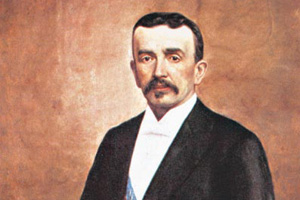Human beings are vertebrates, which means they are animals with a skeleton. It is made up of bones which support the body from head to toe, help give shape and also protect the organs and allow movement.
The bone is an organ which is made up of multiple types of tissues and structures. The main component is bone tissue, then there is connective tissue, adipose tissue in the marrow cavity (the space which contains the bone marrow), cartilage at the ends of the joints and in the growth zones , the periosteum (thin membrane that covers the bone), blood vessels and nerves.
Together, the bones, muscles and joints (joined together by tendon, ligaments and cartilage), make up the osteomuscular system.
Structure and Composition
They are integrated by three layers, each of then contain or protect an important element of the body.
– Periosteum: It is a thin membrane that covers the bone and has various nerves and blood vessels.
– Bone Cortex: It has millions of tiny holes which veins and nerves pass through to reach the sponge tissue.
– Internal Part: The main component is a spongy tissue. It is full of bone marrow, a soft substance which produces the majority of the blood cells that flow through our body, including the red and white blood cells and the platelets. It looks like a red gelatinous material in children and yellow in adults.
The internal composition of the bone is made up of bone cells surrounded by a hard inert substance. It is divided into three types: the osteoblasts, which form new bones by hardening the cartilage of the cellular protein with minerals and helping to repair damaged bones; the osteocytes, which exchange nutrients and waste between the blood and the fine bone tissue; and the osteoclasts, which renew the bone and help give it shape by resending minerals within the blood. They also have an important role in repairing fractures.
Chemically, the bones are made up of 25% water, 45%minerals like salts and calcium and 30% organic material (proteins and collagen). Calcium, its main component, is not only a mineral necessary for strength and hardness of the bone, but is also fundamental in protecting other processes, like production of new blood cells. Collagen, another of its components, provides its flexibility.
Structure of Long Bones
The so-called long bone is commonly called the prototypical bone because it clearly presents all of the bone segments. The long bones are the humerus, femur, tibia among others; and are divided into three segments.
Epiphysis: constitute the ends or terminations of the bone.
Diaphysis: It is the main, long part of the bone; it is semi-cylindrical and made up of compacted tissue.
Metaphysis: It is the area where the bone widens.
We can also find the physis or growth cartilage, a sheet of cartilage located between the epiphysis and the metaphysis, known as the physeal or growth plate. When growth stops, cartilages gradually ossify, process called the closing of growth cartilage.








